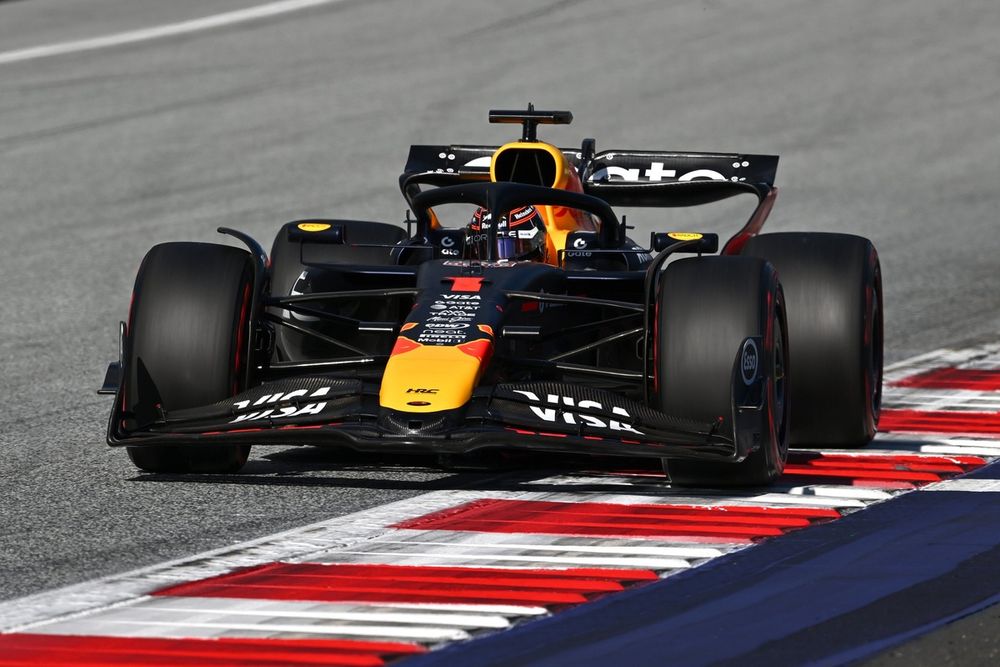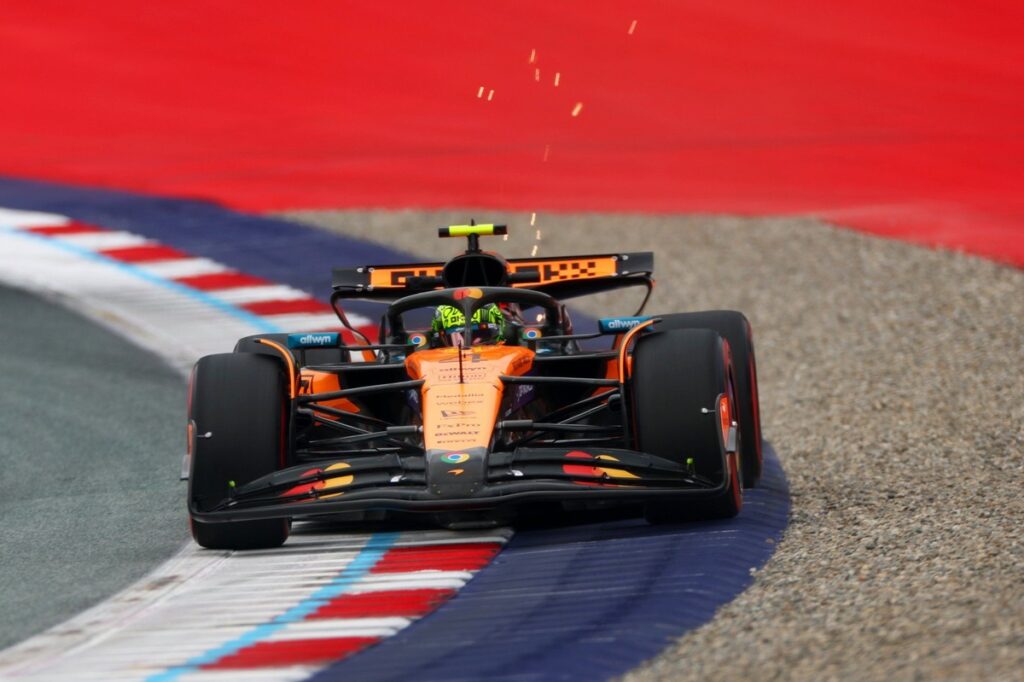On one of the tightest grids in Formula 1 history, and at its shortest circuit in laptime, one would have expected the pole battle for the Austrian Grand Prix to be one decided by hundredths, not tenths.
So, even if McLaren turned up as the clear pre-event favourite, Lando Norris’ gap of 0.531s to second-placed Charles Leclerc still came as quite a shock.
And while there is the obvious caveat that Max Verstappen – like the other McLaren of Oscar Piastri – couldn’t complete his final Q3 run due to yellow flags, the Dutchman said his grip was so poor that he wouldn’t have come much closer in terms of lap time anyway.
Three factors of McLaren’s own making
As always, there is no single explanation for a complex combination of events, but there are several things McLaren got right in Austria to put it in such a lofty position.
“There are a few corners here in which we could see from the GPS overlays that our car was able to carry a significant amount of speed and this one I think has to do with where our car is optimised from a development point of view,” team principal Andrea Stella explained.
Looking at those GPS traces, Verstappen enjoyed slightly higher top speeds on the Red Bull Ring’s first two straights, but Norris really opened up a significant gap through the faster, longer corners over the second half of the lap, gaining over half a second from Turn 6 to Turn 10. His gap to Leclerc widened over the same part of the track.
Lando Norris, McLaren, Andrea Stella, McLaren
Photo by: Steven Tee / Motorsport Images
Stella also paid tribute to Norris’ “resilience”, two weeks after his high-profile smash into the back of Piastri in Montreal – as the Briton responded by having a leg up over championship leader Piastri all weekend.
“Definitely, Lando is a little bit of a specialist in Austria,” he said. “We see that Lando is very resilient. So, even if we had some little issues, definitely we have always bounced back stronger, and even more convincing. So, credit to the work that Lando has done from a technical point of view but also from a personal development point of view. And this is typical of all the champions, they never stay in the same place.”
The work Norris and his team took on to make him get a better feel from the car, leading to a revised front suspension option that he trialled in Canada and also uses in Austria, seems to be paying off. But Stella also emphasised McLaren’s Austria upgrades, which include aerodynamic improvements to its front suspension and all four corners of the car.
“We had some improvements of the front suspension from an aerodynamic point of view which was part of a front-end system upgrade; front wing, front brake, front suspension,” he explained. “There are also some modifications to the chassis and this has allowed us to deliver more aerodynamic efficiency, so more grip for a given level of drag.
“I want to praise the work of the aerodynamic group in being able to ultimately finalise the geometries that seem to have elevated the performance of the car, and overall all the men and women at McLaren that worked hard to deliver these upgrades trackside.”
McLaren has a few more refinements in the pipeline for subsequent races while its development team is switching focus to 2026.
Red Bull bereft of answers for puzzling performance loss

Max Verstappen, Red Bull Racing
Photo by: Michael Potts / Motorsport Images
But in a relative sport McLaren can only look as impressive as its competitors allow it to. Ferrari’s all-new floor appeared to deliver a step – but not magic – while Mercedes was unable to back up its Canada form and fell back to the level it feared on a hotter and more abrasive circuit with longer corners, as George Russell and Kimi Antonelli qualified fifth and ninth respectively.
What is harder to explain is why Red Bull suffered so much in qualifying, and on Saturday night the team didn’t seem to fully understand it either. On Friday Helmut Marko figured the RB21 would be around three tenths behind, but as the wind changed direction and the circuit became hotter in qualifying, both Verstappen and a hapless Yuki Tsunoda reported no grip in any corner. Team principal Christian Horner suspected the rising temperatures knocked the car out of its ideal operating window.
Mercedes and Red Bull are appearing to give McLaren an easy path to victory in Sunday’s toasty two-stop race, although Stella was still wary of Ferrari and refused to rule out Verstappen.
“It looks here like Mercedes is probably struggling a bit more, but we know Ferrari is always good when there’s the need for long stints, and when there’s uncertainty between one and two stops, they could be able to do a one-stop,” the Italian said about his former outfit.
“Let’s see, at the moment we don’t know exactly what it’s going to be strategically. And I would certainly not discount Verstappen either.”
In this article
Filip Cleeren
Formula 1
Lando Norris
Oscar Piastri
McLaren
Be the first to know and subscribe for real-time news email updates on these topics
Subscribe to news alerts
Read the full article here

